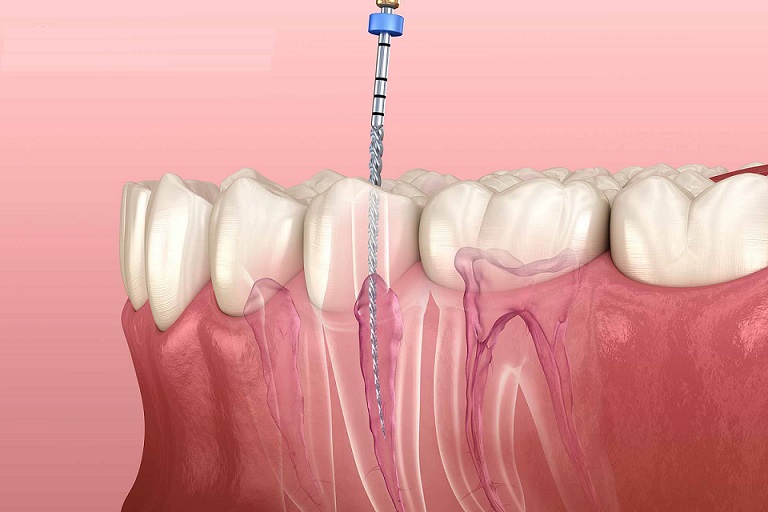
Before we understand about RCT It is important to understand the Development of caries
- Normal Tooth
- Beginning and advancement of caries
- Deeply destroyed, carious tooth with gangrenous pulp and acute opical periodontitis, submucosal phase.
- Deeply destroyed, carious tooth with gangrenous pulp and acute apical periodontitis, enostal phase.
Your tooth is opened, then your root canal is cleaned and shaped
First, your dentist makes an opening in your tooth and removes any fillings and decay. Then your dentist removes unhealthy pulp with tiny, flexible, files. Using delicate, up-and-down motions, your dentist gently cleans and smoothens your canals to prepare them for the canal-filling materials.
Your root canal is filled with dental materials such as gutta-percha and may be covered with a temporary filling.
After the pulp has been removed from your root canals and they have been smoothened, your root canals will be filled. Your dentist may fill the canals with tiny cone-shaped pieces of gutta-percha, a firm, rubber like material, or use another dental material. A sealer cement is used to seal the filling material into place.
A post supports your tooth
After the inside of your tooth has been treated, the outside will be restored. To protect your tooth’s underlying structures and give your tooth a healthy appearance, and if your tooth needs extra support, your dentist may remove some gutta-percha and insert a post before the filling and crown are applied.
- A post, stainless steel or another metal, is sometimes cemented into your root canal to build up your tooth after root canal therapy.
- A filling, usually silver or a tooth-coloured dental material, may be used to fill the opening in the top of your tooth.
- A crown, usually gold or porcelain, may be used to cover a tooth that has a large opening after root canal therapy.
The success rates for Root Canal Therapy have been reported to be as high as 95%.